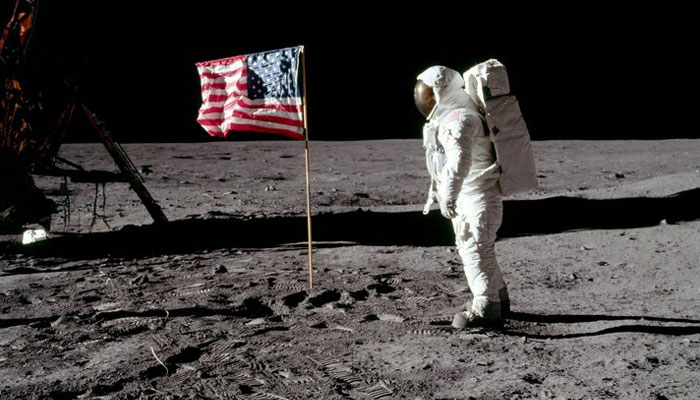How did Nasa pull off flag hoisting on moon for Apollo 11 mission?
Planting US flag on lunar surface became one of the biggest controversies about historic event
July 20, 2024

The National Aeronautics and Space Administration's (Nasa) Apollo 11 mission achieved a significant milestone for mankind 55 years ago on July 20 as it landed on the moon.
Around 380,000 kilometres away from Earth, Apollo 11 astronaut Neil Armstrong took mankind's first steps on the moon's surface, followed closely by astronaut Buzz Aldrin.
While the astronauts collected samples and explored the powdery landscape, one significant activity they performed on the moon was planting the US flag on the moon's surface.
However, this later sparked controversies as the flag was seen waving in an airless environment. Some even denied that the whole event ever happened.
Nevertheless, the event did happen and there was just some clever science behind the flag display.
How did US flag wave on moon?
Jack Kinzler, chief of technical services at Nasa's Manned Spacecraft Center (now Johnson Space Center), was given the task to create a flag that would appear to wave in an airless lunar environment, India Today reported.
It sounded impossible but Kinzler and his team fulfilled the task.
They created a telescoping flagpole with a horizontal crossbar at the top. The flag was attached to this crossbar and hemmed along the top edge to create a sleeve.
It allowed the flag to be extended outward.
The flagpole was made of anodised aluminium tubing, which is lightweight and durabile in extreme temperatures while the flag was made of nylon fabric that could withstand the harsh lunar environment and the intense sunlight.
To ensure the flag would stand upright in the Moon's lower gravity, Kinzler's team added a small spring catch that would click into place when the astronauts raised the flagpole.











